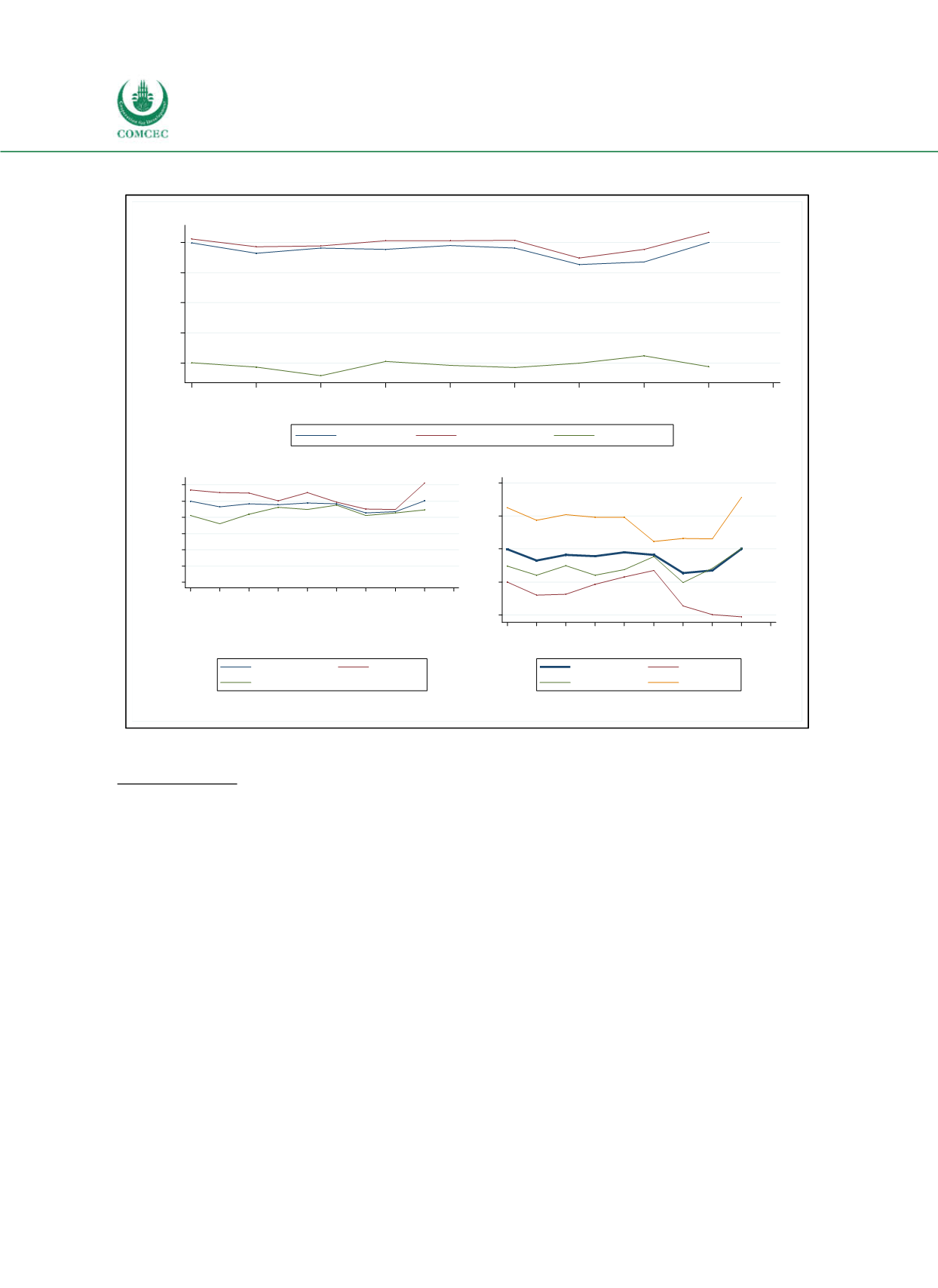

Improving Public Debt Management
In the OIC Member Countries
52
Figure 3-8: Grant Element in OIC Member Countries
Sources: World Bank (2016) International Debt Statistics, calculations by the Ifo Institute.
Refinancing risk
Maturity structure
The share of shortterm debt (debt with an original maturity of one year or less) has decreased
over the last decade in the OIC member countries, amounting to 10.2% of outstanding debt in
2015. This share is slightly higher than the worldwide average of 7.5%.
Figure 39 shows the average maturity of all new public and publicly guaranteed loans
contracted by OIC countries during each year for 20062014. The average maturity of new
debt commitments has fluctuated between 18 and 23 years. Private creditors extend their
credit for an average period of approximately four years. This average maturity for private
credits lies below the worldwide average of five years. Creditors who provide their financial
resources for periods exceeding a decade are typically official creditors such as international
organizations (e.g. the World Bank, regional development banks and other multilateral and
intergovernmental agencies) and governments. The maturity of new contracts is significantly
larger in lowincome countries than in middleincome countries, which might be explained by
the larger share of official creditors in lowincome countries (see lower left panel of Figure
39). Consequently, the average maturity of new contracts is larger in the African group, which
may also be explained by a larger share of official creditors (see lower right panel of Figure
39).
10
20
30
40
50
%
2006
2007
2008
2009
2010
2011
2012
2013
2014
2015
Year
All creditors
Official creditors
Private creditors
0
10
20
30
40
50
60
%
2006 2007 2008 2009 2010 2011 2012 2013 2014 2015
Year
All
Low income
Middle income
30
40
50
60
70
%
2006 2007 2008 2009 2010 2011 2012 2013 2014 2015
Year
All
Arab group
Asian group
African group
















